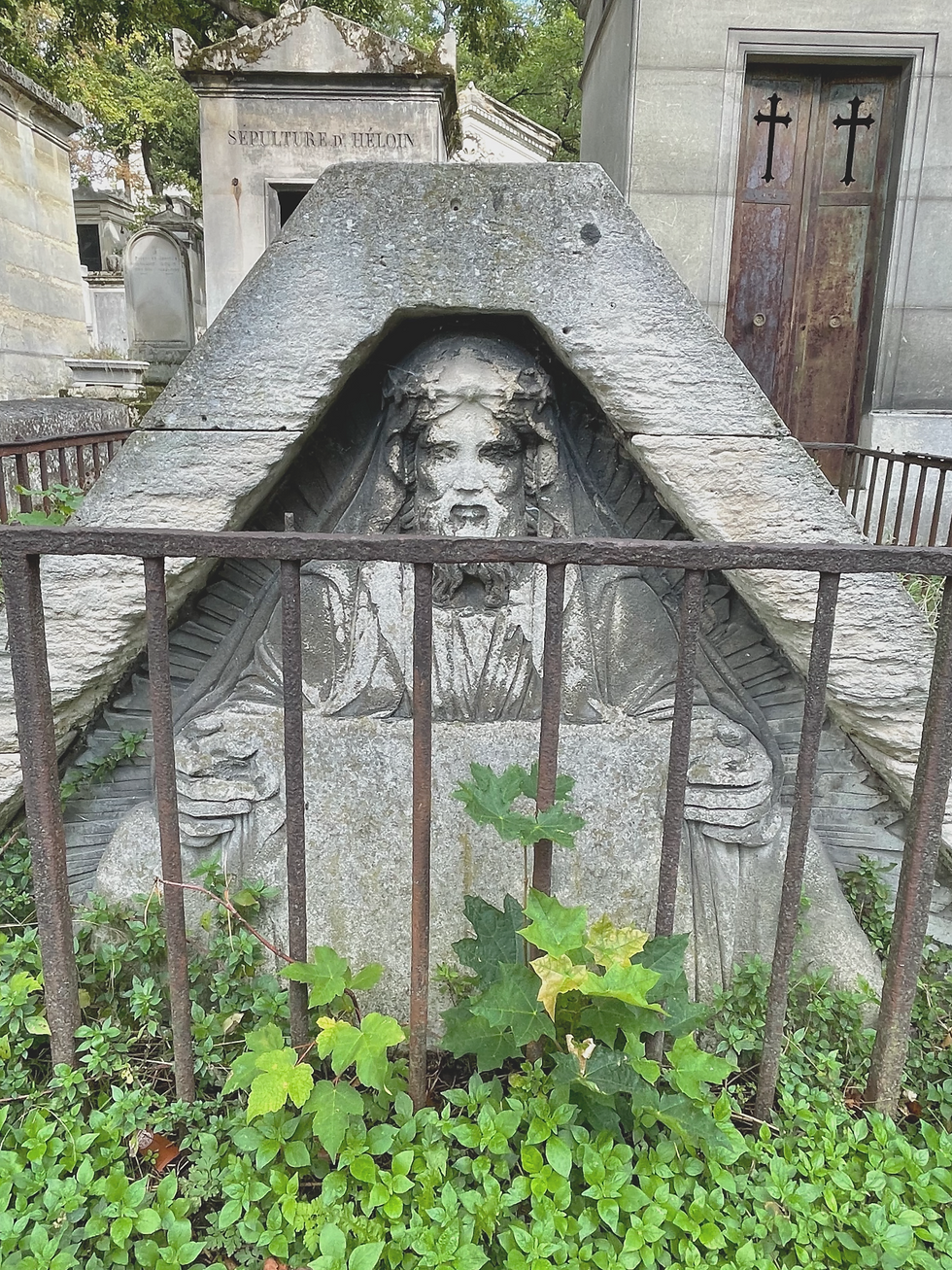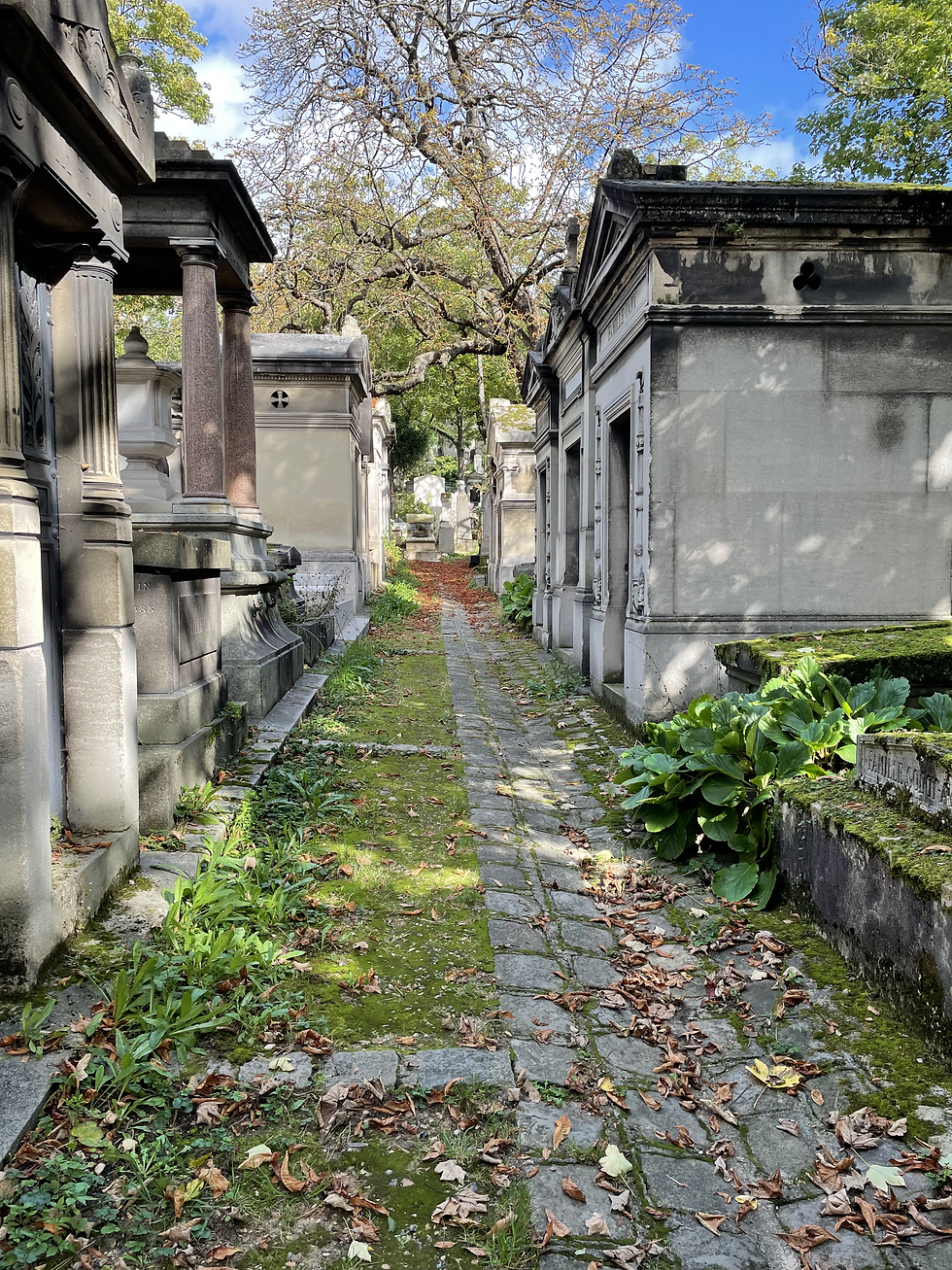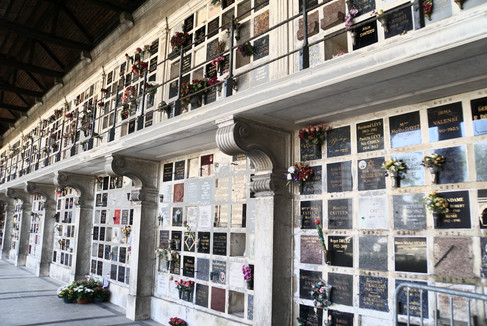Père Lachaise Cemetery, Paris
- ellen

- Oct 30, 2021
- 3 min read
Updated: Apr 13

Perched on a hillside covering 110 acres of the 20th arrondissement in eastern Paris, Père Lachaise Cemetery takes its name from Père François de la Chaise, confessor to King Louis XIV. Created by a decree from Napoleon Bonaparte, the cemetery opened in 1804 largely to relieve the overcrowding of the Cemetery of the Innocents and other cemeteries in Paris (see also The Catacombs of Paris).
When it opened, it contained only 13 graves as it was considered too far outside the city to be practical, so the early 19th century city fathers devised a clever marketing plan. They transferred the remains of Molière and Jean de la Fontaine, a popular poet and fabulist, to Père Lachaise. It didn't take long for word to spread and by 1812, more than 800 people were buried there.
Then, in 1817 the remains of the fabled lovers Abélard and Héloise were moved to Père Lachaise (photos below). There is much discussion about whether this is really where their remains rest, but it's a touching tribute to both of them and to their love story. Now more than one million people are buried among its meandering tree-lined, cobblestone lanes and it is both the largest park and largest cemetery in Paris.


To maximize space, many tombs contain the remains of multiple family members such as this one belonging to the family of Baron Georges-Eugène Haussmann who led the renovation of Paris in the mid-19th century.

Because Père Lachaise contains so many remains, current regulations state that only people who live in Paris or have died in Paris can be buried there. In recent years the city has issued 30-year leases on gravesites. If the lease is not renewed, the remains can be removed and placed in the columbarium at the cemetery (below).
Along the Boulevard de Mélinmontant which runs along the western edge of the cemetery is an almost 1,000 ft. boundary wall with the names of over 94,000 Parisians killed in action during WWI.

Street sign at one of the entrances to the cemetery. Maybe an attempt at a little humor?

Napoleon decreed that any citizen should have the right to be buried at Père Lachaise regardless of race or religion. We saw graves representing many different religions and nationalities. There is a large section dedicated to those killed in World War II, especially during the holocaust.

And this one, dedicated to the children who were killed under the Nazis.



Many notable people are buried in Père Lachaise. These are a few.




Jim Morrison's grave is fairly unremarkable compared to most of the others, but it's one of the most visited graves in the cemetery.

We came across these particularly poignant tombs.







And there are many which are so artistic...









Some of them are no bigger than a telephone booth, but the stained glass is beautiful.





And then there are some that are just plain interesting...





I've been to Père Lachaise a few times; it's lovely in any season.




If you stand in the right place, you can even see the Eiffel Tower!

➜ Top Tips
Métro lines 2 and 3 will get you there. Get off at either the Père Lachaise or Philippe Auguste stops.
Walking around Père Lachaise can be tiring; wear comfortable and sturdy shoes.
I would recommend taking a guided tour at least the first time you go. Book one in advance.
Download a map of the cemetery; it's a rabbit warren of little lanes, and graves can be difficult to find.
Père Lachaise is not normally among the first places that tourists visit (and it took me many visits to Paris before I first saw it), but it should be high on your list!








Wow! heart wrenching images.